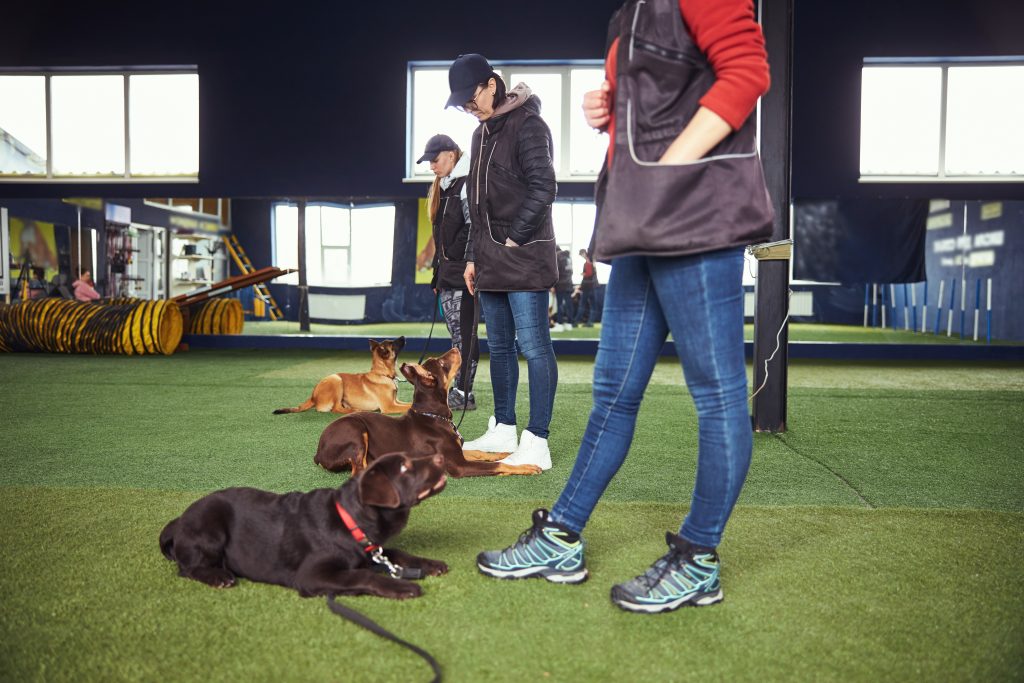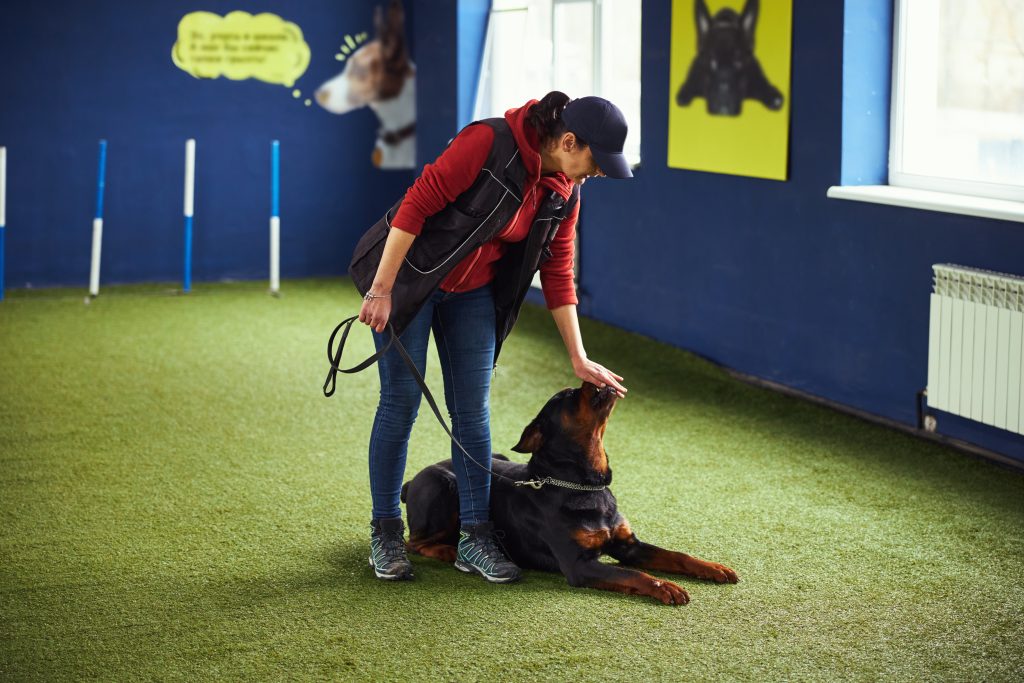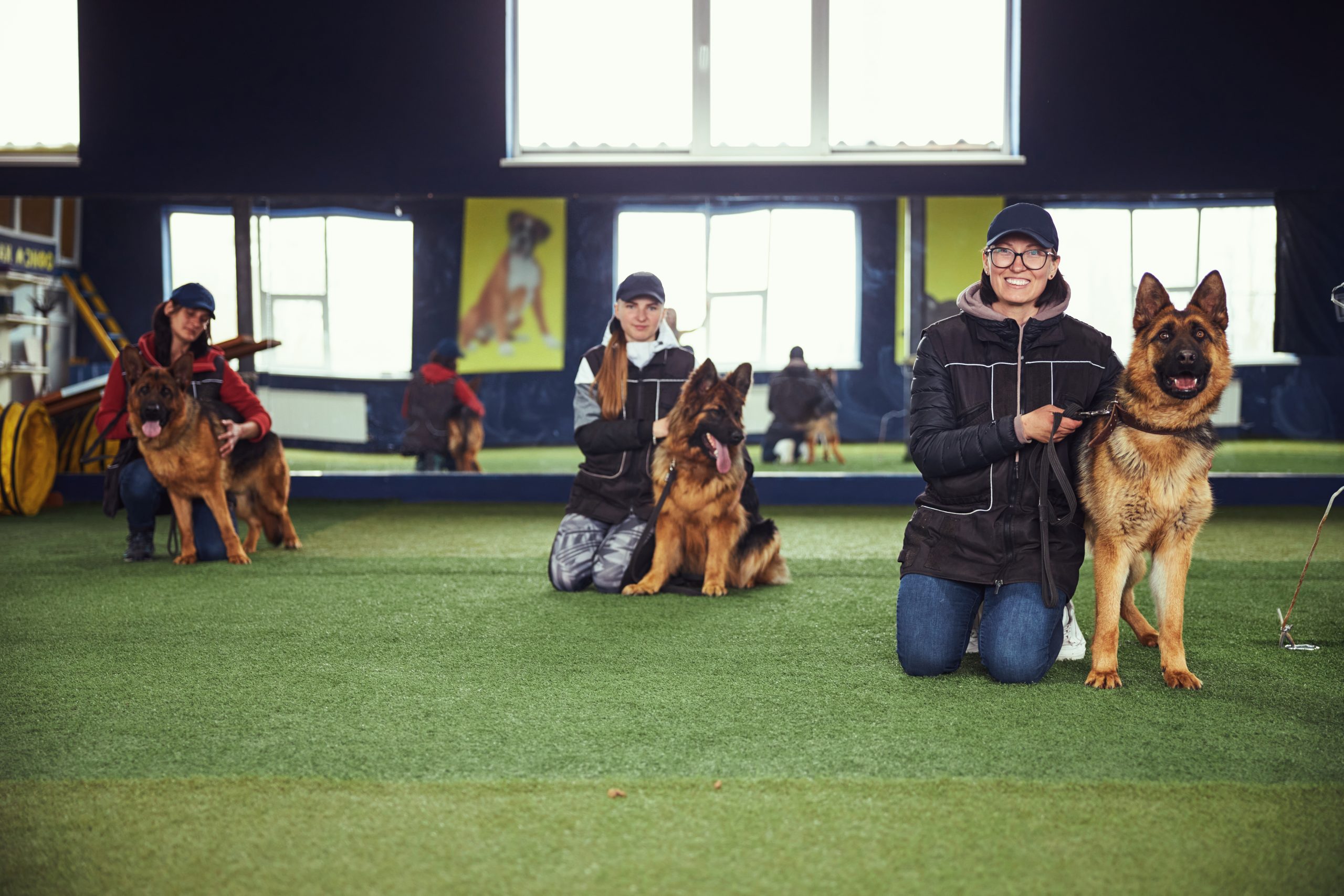Every pet owner’s obligation is to make sure their animal buddy is secure and well-behaved, hence dog obedience courses are rather important. Usually taught in these sessions are simple instructions as sit, down, come, stay, and leave it. Puppies trained with positive reinforcement and correct training methods may assist to avoid undesired behavior and promote mutual respect between them and their owners. Owners thus feel more safe as their pets are less likely to get into risky circumstances in daily life. We will explore the five fundamental commands taught in dog obedience courses and the value of moving toward a well-trained dog in this post.

Sit Command
Among the most important obedience orders given in dog training courses is the Sit Command. Your dog’s safety depends on it, as well as it provides the basis for learning more difficult instructions. We will go over how to teach your dog the Sit Command below along with some useful advice to get them into position.
Step-by-step process:
- Holding a treat, first let your dog sniff it.
- Slowly raise the reward above the head of your dog to get their nose to go back and up. Your dog will so start to sit down.
- Say “Sit” and provide your dog the reward along with plenty of compliments as soon as her haunches reach the ground.
- Continue this until your dog begins to sit right away once the reward is raised above their head.
Starting with a verbal cue:
- You may start using a vocal command if your dog regularly sits with the reward lure.
- Say the phrase “Sit” concurrently as you raise the goodie. Your dog will come to link the term with the sitting behavior.
- Gradually cut the usage of the treat lure and boost the use of the verbal cue so your dog begins to react to the sound of the word rather than just the sight of the reward.
- Taking your dog into position:
- Put a goodie very up to your dog’s nose.
- Move your hand down and back, towards their tail, exactly between their front legs. Their sitting down will be prompted by this.
When they answer right, always speak in a cheerful manner and show great compliments.
Keep in mind that Sit Command should be practiced in many contexts and places. Throughout training, use high-value incentives; vary the goodies to prevent monotony.
Both you and your dog will benefit from teaching them the Sit Command. A well-trained dog makes one happier, safer, and more pleasant to live around. Positively, it is advised to run Sit Command a few times daily to be sure your dog remembers the skills over time.
Down Command
Your dog should start on the Down command after it has perfected the Sit command. Before beginning the training session, make sure your dog has had enough activity; a weary dog will be more likely to follow directions.
Saying “Down,” first place a reward in front of your dog’s nose and gently slide it towards the floor. Wait patiently until your dog lies down totally. Reward them with the goodie and commend them right soon as they do. Before you praise them, be sure they are completely laying down and not only crouched.
Should your dog find the Down command difficult, consider breaking the command down into smaller stages or moving the reward down more slowly. If your dog merely crouches rather than lies down entirely, for instance, click and treat for each downward movement and progressively lead to a full lay down. If your dog is having trouble on a slick surface, you may alternatively train on another surface, such grass or carpet.
Teaching the Down command calls both patience and tenacity. Training should be constant as some dogs may pick this command more slowly than others. Always treat your animal buddy when they get it correctly; rewards and praise will inspire them to keep learning and honing the command. Your dog will boldly learn the Down and Sit commands along with time and effort.
Come Command
Every dog owner should teach their animal buddy the vital ‘Come Command’. Obedience training must include this as a consistent recall may save the life of your dog and keep them from maybe perilous circumstances free.
Learning the “Come Command” for your dog calls for constant repetition and patience. Using high-value rewards and positive reinforcement training techniques can help your dog to obey the instruction.
Choose a calm space free of distractions for your puppy to begin training. Call the name of your dog and mix it with the ‘Come’ order. Encouragement of your dog to approach you should come from a joyful, energetic voice. If your dog approaches you, recognize their positive conduct with extravagant compliments and a treat.
Should your dog not know this command, you may keep them from going off by strapping a leash on a harness. Start by calling your pup’s name with the “Come” command while strolling a few steps back backwards. Reward your dog with very valuable goodies and positive reinforcement whenever it approaches you.
Always make it a happy and gratifying experience for your animal buddy; avoid giving the “Come” order in bad circumstances. Reliable recall with your dog depends mostly on regular practice and patience.
Stay Command
Among the core commands taught in dog obedience class is the “Stay” one. Make sure your dog can sit on demand before beginning instruction on the “Stay” command.
First, teach your dog to sit in a peaceful, free of distractions area. Hold your hand out in front of your dog after they are seated and insistantly say “Stay”. Make sure your dog receives eye contact while you do this.
Give your dog treats and praise when it stays motionless for a brief length of time to help it to remain in position. You may progressively widen the distance between you and your pet as they get accustomed with the order. Beginning only a few steps away from your dog, you may further separate yourself.
You may also increase the time your dog is expected to remain as you become further apart. Introduce some distractions like toys or goodies to check whether your dog stays in position and thus strengthen the stay command. Make sure your dog maintains its seated posture in face of all distractions.
Tell your dog they may move and reward them after they do using a release word such as “OK” or “Free.” Every time your dog responds to the “Stay” command, make sure to treat them and provide positive feedback.
Recall, teaching the “Stay” command calls for patience, consistency, and plenty of praise—just like any new behavior is taught. Your dog will learn to follow the “Stay” directive over time and with experience even in demanding circumstances.
Leave It Command
Every dog should pick up the fundamental basic command, the Leave It one. It educates your dog to stay away from unsafe circumstances or chasing after other animals as well as from picking up or swallowing poisonous objects. Here are detailed, exact instructions on how to teach your dog the Leave It command:
- Start by laying something your dog would like on the floor in front of her.
- Say “Leave it” in a forceful, yet subdued, voice as your dog gets closer to the item.
- Use your foot or body to restrict your dog’s access to the object should she keep approaching it.
- Immediately praise and give your dog with a high value reward once it backs off from the item.
- Continue the activity many times until your dog regularly refutes approaching the floor for the object.
- Using increasingly appealing goods can help you progressively raise the challenge; likewise, start include off-limits home objects like remote controllers or shoes.
- Once your dog has learned the Leave It command with home objects, begin using it to discourage animal chasing or to prevent consuming dangerous plants on walks.
- Recall that effective training depends on positive reinforcement, hence always treat your dog for following the Leave It order.
Remember that the Leave It order is designed to be used as a preventive tool to keep your dog safe, not as a kind of discipline or scolding tool. Your pet will learn to avoid off-limits objects and behaviors by regular practice and positive reward.

Conclusion
Achieving success with dog obedience mostly depends on regular training and practice. To make sure your furry buddy can choose and remember the fundamental instructions discussed in this article, training is a continual process that calls for consistency and patience. Every pet is different, however, hence tailored training will be necessary to fit their particular requirements and personality. Remember that the ultimate aim is to have a well-trained dog that can negotiate daily life and avoid risky circumstances while you keep investigating many training approaches, tools, and assistance. Thus, keep training and practicing; enjoy the fulfilling feeling of owning a well-trained dog!




